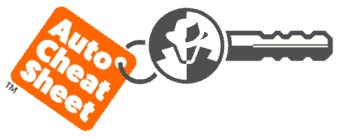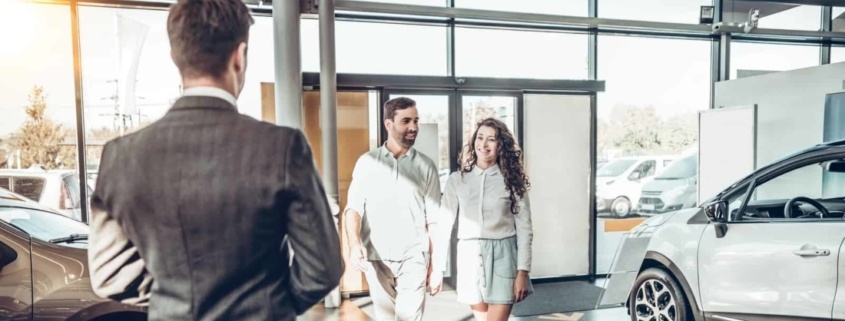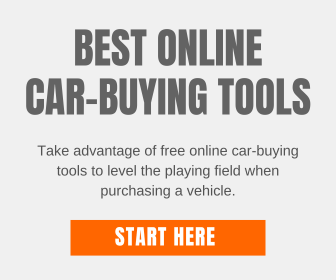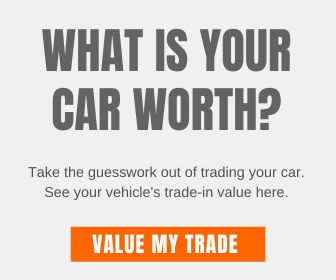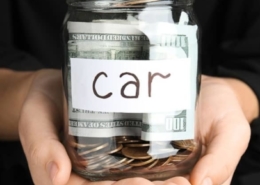Top 10 Car Buying Mistakes to Avoid
Buying a car is fun, and getting caught up in all the excitement is easy. You drive off the lot with a big grin, but then a few days later realize you overpaid for your new car because you made one of several typical car buying mistakes. That’s when reality strikes and, sadly, find out it’s too late to do anything about it.
Here are the ten most common car buying mistakes made by automobile purchasers that may rapidly transform early exhilaration into purchasing remorse—and how to prevent them.
Everyone Makes Car Buying Mistakes
Buying a car isn’t like buying a pair of jeans. You can’t return it if you don’t like it. Unless there’s a fault with it, the dealership has no obligation to take back that brand new truck, SUV, or sedan. (Even if it is faulty, you must give them a chance to fix it first.)
So, tough luck if you find out your new ride, doesn’t fit your garage or isn’t as comfortable as it seemed on the test drive. Worse still, if you find out you overpaid or can’t afford the payments, you’re still on the hook for that monthly sum.
How do you avoid this problem? Simple: read AutoCheatSheet.com’s list of the top 10 car buying mistakes when buying a car. Here they are.
1) Not Taking Time to Research Vehicles and Prices
Rushing is one of the biggest car buying mistakes. As with jeans, there are many different cars to choose from so don’t buy the first one you see. Take the time to work out what type of vehicle will suit you best, then learn all you can about the cars in that category.
For example, pickup trucks are always trendy but are they the best vehicle for you? Would you be better off with a compact SUV? How about a hatchback or wagon? Don’t forget. There might be better deals on less fashionable vehicles.
Then dive deeper by looking at models and trims. Please read up on reliability and gas mileage, learn about equipment and depreciation, and look for reports of new models coming soon. (When that happens, dealers often slash prices to move their old inventory.)
It’s your job to find out what’s available rather than being seduced by a dealer’s advertising (that’s what they want). Only when you can explain what kind of vehicle you’re looking for, why you want it, and if it’s right for you. That is when you should start shopping.
Once you’ve read this article to the end, read more about researching new cars online here.
2) Falling in Love With a Specific Vehicle
There are two reasons this is a terrible mistake. First, the salesman will probably catch on quick that you’ve set your heart on a GoGoWagon LTE and will become less flexible on the price. (If you’re licking the paint off the car, he knows you want to buy it.)
Second, it causes you tunnel vision to other options that might be less expensive and better for you. Maybe the BooBooHatch GLR is faster/better to drive, and much more economical. But you’ll never know if you’ve set your heart on the GoGoWagon.
Some dealers may give good deals to customers who like a particular vehicle. However, it’s best to keep an even keel and let the salesperson know you’re interested in buying the car if you can buy it reasonably. But if you can’t buy the vehicle at the price you want, you’re happy to look at other cars.
Dealerships are not in the business of losing money on car deals. But keeping your feelings close to the vest and walking the fine line between “interested” and “overenthusiastic will generally help you get closer to ensuring the dealer breaks even or only makes a couple of hundred dollars off your deal.
3) Not Taking a Thorough Test Drive
Turn right out the lot, make a right at the light…two more rights, and you’re back. Indeed that’s enough to tell if you like a car? Not a chance.
Most dealerships have a planned test drive route. This route usually only has right turns with very few lefthand turns. It’s proven while test-driving an unfamiliar vehicle. More accidents happen while turning left. Once you get away from the dealership, most car salespeople will let you drive wherever you want. Just explain to them that you would like to drive the car for more than just a few minutes to see if you could own it.
The test drive isn’t about looking for faults; it’s when you decide if you can live with a car. You’re likely to turn left once in a while. Shouldn’t you do that on the test drive?
Once you’re about to go on the test drive, familiarize yourself with all the buttons, knobs, and controls. Adjust your seat to a comfortable driving position, and then adjust all your mirrors to figure out exactly where the blind spots are.
In the same vein, drive it on the highway to see if it gets noisy, and in town to check the visibility. Drive over different road surfaces, feel how it rides, and above all, check that you’re comfortable. Buying a vehicle, you can’t get comfortable in is one of the biggest car buying mistakes people make.
4) Negotiating Down From M.S.R.P. (Sticker Price)
When you buy a pair of jeans, the price on the label is what you’ll pay. The same is not valid for a car. The number on the window sticker is the Manufacturer’s Suggested Retail Price, emphasizing “Suggested.” Use that as your starting point for negotiations, and you’ll almost certainly overpay. That’s because there’s a second, lower price than the dealer concentrates on: “dealer invoice.”
The dealer invoice price is nominally what the dealer pays the manufacturer for the car, and there can be quite a difference between the two. (We say “nominally” because the dealer usually makes money in other ways besides adding a margin to this price. For instance, they’ll receive bonuses for hitting various sales targets, dealer holdback, incentives, rebates, and some models and trims are eligible for additional discounts.)
The best and most accessible way is by contacting dealers for free price quotes online. You will know which dealer is more flexible on pricing and which will be more willing to discount their prices to sell a car using this strategy.
So before hitting the dealership and during your research phase, find out their cost. My article on New Car Dealer Cost vs. Factory Invoice can help you with that. Once you find it, you’ll want to start your negotiations from there.
5) Focusing Only on the Monthly Payment
It’s easy for a dealer to lower your monthly payment. All they need to do is extend the term of the loan or lease. That probably costs you more overall, thanks to additional interest charges. Another trick is to increase the size of the down payment. Again, your monthly cost goes down, but you likely pay more overall.
All that matters is the price of the vehicle. Almost certainly, car salespeople are highly skilled to steer you away from talking about that number but don’t let him. No matter how often he tries to divert your attention from it, please keep returning to the price and argue it down. Only think about payment terms once you’ve agreed to a purchase price.
Car buying tips you should know
- The cost of a new car from a dealer and the factory invoice price is different. The dealer’s cost is less than the invoice price.
- Knowing the dealer’s costs puts you on a level playing field when negotiating the best price with the dealer.
- Always negotiate up from the dealer’s cost, not from MSRP (or above) down.
- Take advantage of free, no-cost online services to check what vehicles are currently selling for in your local area.
- Please read my reviews on the top online car shopping sites: RydeShopper, Edmunds, MotorTrend, and CarsDirect.
6) Relying on the Dealer for Financing
The dealer isn’t doing you any favors when he arranges the financing; he gets paid. So not only does he make a profit on the car sale, but he will attempt to make more profit on the loan he “originates.” He probably doesn’t get you the lowest interest rate you’re eligible for either.
Always shop around for auto financing before going car shopping. A pre-approved auto loan evens the playing field with a dealer’s finance department. It also gives you something to fall back on if they can’t get you approved at a lower interest rate than you already have.
Credit Unions are often a low-cost source. But for the lowest rates, use an online source such as myAutoLoan and Auto Credit Express. These companies have no overhead and have much lower interest rates than brick and mortar lenders.
Find out what rate you can get, so when the dealership’s “F&I” guy (that’s “Finance and Insurance”) starts talking terms, you’ll know if he’s offering a good deal. Remember that a 1% difference on a $25,000 loan stretched over six years adds up to a large amount of money.
In my auto finance section, read more about how to get a pre-approved auto loan online.
7) Buying Unnecessary Extras
Just say no to rustproofing, windshield coatings, and sports team mascots (okay, I made that last one up.) You don’t need them. The trouble is, it’s easy to tell yourself, “I’m spending this much already, so why not drop a few bucks more to make it extra special?”
Here’s why not: extras are very profitable for car dealerships and many you don’t need. If you later decide it is something you want, shop around. You’ll almost certainly get it at a much better price.
8) Rolling Negative Equity Into the Car You’re Buying
Rolling negative equity into your new car is also one of the worst car buying mistakes consumers make. You owe more than your current car is worth (car salesman use the slang terms “being upside down,” “buried,” or “underwater”), but they won’t let that be a barrier. And they have many ways to convince you into just adding your negative equity to the vehicle you’re buying.
Suppose a new car loses roughly 30% of its value after the first year of ownership. What happens when you add $3500.00 to the vehicle when you buy it? That money still has to be paid back, and you’re the one left holding the bag. On a typical five-year note, it takes about 3.5 years for you to start getting close to even.
Your dealership will add the difference to your new loan. That means you’re borrowing money to repay money you’ve already borrowed, and when you dive into the numbers, this can be very expensive.
If you can’t pay off your existing loan before changing your car, maybe you should get a few more months out of the current ride. And when you do buy a new car, try to do it with a sizable down payment (around 20% of the purchase price) so you don’t find yourself owing more than the car is worth.
9. Not Knowing the Value of Your Trade
If you can sell your old car privately, do that rather than trade it in; you’ll get a better price. That said, there are good reasons for trading in your vehicle. It saves you the hassle of selling it outright and meeting with strangers, and it simplifies your cash flow situation. However, if you go this route, start by finding out what your car is worth.
Several online car price guides will estimate a trade-in value. Please print out the results and take them with you to the dealership. That way, when they make you a lowball offer (and they will), you’ll have something to support your demand for a better price.
Remember, they will be offering you wholesale prices. You won’t get the retail price. The dealership wants a margin between the buying and selling prices because they have to make a living. By determining what your car is worth, you make that margin smaller than it would otherwise be.
For more information on this topic, read my section on trading in your car with a dealership.
10. Not Having a Used Car Inspected
When buying a used car, there’s an important phrase to remember: caveat emptor. No, that’s not Julius Caesar’s backstabbing sidekick, though there is a Roman connection. It’s a Latin phrase meaning, “buyer beware.” The majority of used automobiles sold are “as-is, where-is.” It’s up to you to understand what you’re getting for your money.
Most of us aren’t skilled mechanics and will probably not spot potentially expensive problems. You should pay an independent mechanic for a professional inspection and inspect the vehicle’s title history by purchasing a used vehicle history report. Not doing so can be a costly car buying mistake.
Think Before You Buy a Vehicle
Living with a car is very different from taking it for a quick test drive. Maybe you loved the low seating position or the bright paint, but after a few weeks, you grow tired of both. Perhaps your problem is more financial: you realize those payments take a more significant chunk of your income than you’d budgeted for, or the insurance premiums are higher than you expected. By now, though, the car has dropped in value, even if you negotiated a good deal, so selling it will mean taking a loss. It’s not a good feeling.
Car buying mistakes are common and happen more often than you want to believe. Most people don’t want the embarrassment of admitting to making a mistake, so they keep their mouths shut. Car dealerships make money from them while all the unfortunate buyers can grit their teeth and keep making the payments. You can avoid this problem by studying my list of top 10 car buying mistakes. Once educated, you’ll be a more competent and happier car owner.
The number one tip for saving the most money when buying a new or used car is always to take your time and “DO YOUR RESEARCH FIRST!”
I recommend using an online referral service such as Ryde Shopper, Edmunds, Motor Trend, and Cars Direct before physically walking into a car dealership. Their free online price quotes will automatically help level the playing field with the dealer and let you know right away which dealers are willing to be more flexible on price. Please consider them the next time you buy a vehicle. They will save you time and a lot of money.
